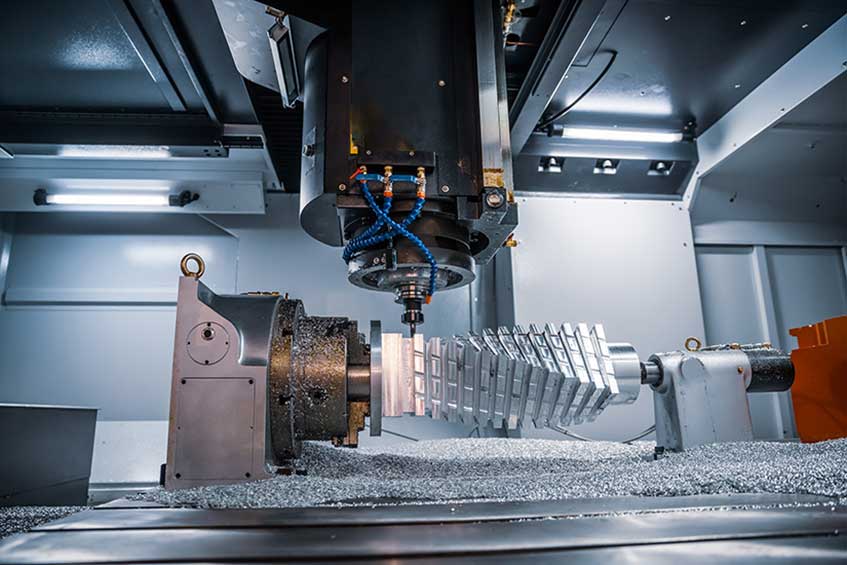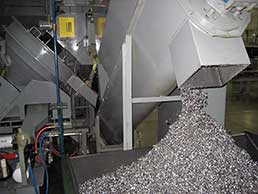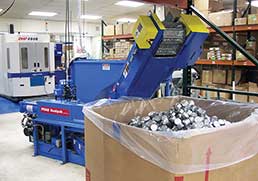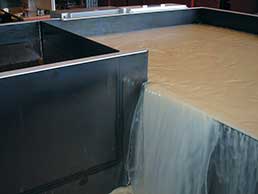
According to the Aerospace Industries Association, few if any industries have done a better job of improving environmental performance over the last several decades than the aerospace industry. The AIA states that today’s aircraft and engines are considerably more efficient than those manufactured just 20 or 30 years ago, which has dramatically decreased fuel usage and harmful emissions. Additionally, the international aerospace industry continues to make extraordinary investments in the effort to reduce its carbon footprint and take environmental performance to the next level. Advances like alternative fuels and even more efficient airframes and engines, combined with fuel-saving gains in operations and transformations in air transportation systems, point to an even greener future.
For the actual plants that manufacture parts for those airframes and engines, however, the environmental situation is more concerning – and the investments aren’t nearly as extraordinary. According to ProComplianceWare – a developer of Web-based solutions for industries facing an increasing need to better manage their various compliance obligations – many aerospace manufacturing companies do not have adequate processes in place to cost-effectively manage waste streams or environmental compliance. As a result, they are at risk for penalties and fines that can escalate into the millions of dollars.
The hundreds of waste streams that an aerospace manufacturing facility could potentially produce, are more than enough to keep everyone in a plant’s environmental health and safety department awake at night. For many environmental compliance managers and providers of waste reduction solutions, the biggest hurdle continues to be the battle for capital expenditure. Too often, managing waste and mitigating the associated risks is considered a secondary process to production. When a plant’s performance is primarily measured by output, it’s easy to see why capital budgets are so heavily tilted toward production equipment and processes.
Environmental responsibility and sustainability are equally important to an aerospace manufacturer’s bottom line. This is primarily due to the steep financial penalties associated with failing to comply with local, state and federal waste regulations as well as ISO 14001 environmental management standards that mandate a reduction of a manufacturing facility’s waste streams, emissions and carbon footprint. There are three important steps that an aerospace manufacturing facility must take in order to become environmentally responsible while also maximizing profitability:
Establishing an environmental sustainability protocol is a good idea for a variety of reasons, starting with mitigating risk and protecting a plant from potential fluid disposal liabilities. For example, chips and turnings that are saturated with free liquid can become a liability for the manufacturer if a lawsuit is filed against a recycler that disposes of hazardous materials improperly. Remember, manufacturers can still be held liable for fines and penalties even though metal and coolant wastes have been removed from site by a recycler.

The more used coolant or machine oil a manufacturer sends to the recycler, the greater the chance of being implicated if disposal problems arise. By proactively addressing fluid and chip remediation, manufacturers can shield themselves from liability merely by proving good intent. So, even without a formal environmental policy in place, the minimum requirement should be to map one out using ISO14001 as a baseline.
While ISO 14001 does not state specific requirements for environmental performance, it does provide a framework that a company or organization can follow to set up an effective environmental management system. ISO 14001 can provide assurance to company management and employees – as well as regulators, customers and the general public – that environmental impact is being measured and improved, which in turn can reduce the cost of waste management as well as the consumption of energy and materials.
Aerospace manufacturers that do not adopt a formal environmental policy can still seek out opportunities for material savings and environmental improvements that can be immediately realized. Grinding/honing operations, cleaning processes and even recycling practices related to wash and mop water should be on the list, but a company’s machining operation is an obvious place to begin an environmental, health and safety assessment.
This is the point where scrap metal and coolant wastes are generated by equipment such as screw machines, gantry mills, CNC lathes and drills. Reclaiming and recycling these materials is extremely beneficial to improved workplace safety and reduced environmental impact. Doing so can also bring a significant financial benefit to an operation, which becomes evident when you analyze the equipment options that are available today.

Volume reduction is the key to effectively managing solid waste material in aerospace applications. The current trend is to reduce the material at the front end of the processing system using a crusher or shredder unit at the discharge of the CNC conveyor. This process adds value in a number of ways, including:
Passing through a crusher or shredder system will also give the material a shovel-grade consistency for further processing through a wringer unit. A modern centrifuge or chip wringer will remove upwards of 98 percent of the free liquids from the material. This is accomplished through centrifugal force of up to 700 Gs that is applied to the chip surface to extract the coolant and discharge a chip that has a moisture content of less than 2 percent. The dry material can then be sent pneumatically or by gravity to lugger boxes, semi-trucks or a storage silo.
Another modern trend in aerospace manufacturing is to utilize briquetter systems to meet environmental compliance requirements and literally squeeze more value out of waste material. By incorporating dual compression technology, a Dualpak briquetter will force chips and turnings through a die using high compressive force from two opposing cylinders. The result is a “hockey puck” with an average solid density of 85-90 percent. This process extracts valuable waste fluids from the material as well, leaving the puck up to 99 percent dry.
After the cutting fluids have been reclaimed by wringing or compressing, the next obvious consideration is the implementation of a coolant recycling or filtration system. Aerospace manufacturing plants should strive to eliminate the problems that occur when tramp oils and suspended solids are allowed to accumulate in coolant or wash water systems.


Properly designed filtered-coolant systems remove free-floating and mechanically dispersed tramp oils, fine particulate, tool debris and more from individual sumps, central systems and wash tanks. They also extend tool life, contribute to the production of higher quality parts, and reduce costs associated with coolant purchases and maintenance.
Other solutions include ultrafiltration systems, which extend the life of wash water, rinse water, floor scrubbing solutions, synthetic coolants and pressure wash solutions by controlling the content of oil and solids. These systems are also used for disposal of waste coolants and oily waste waters to help meet zero manifesting goals and comply with local, state and federal environmental regulations.
Environmental compliance is a Continuous Improvement Process (CIP) where systems and equipment should be constantly evaluated and improved to achieve maximum efficiency and effectiveness, especially regarding overall environmental impact. Although they operate in an industry known for futuristic technological advances, many aerospace manufacturers are behind the curve with their waste management and recovery processes.
The task of implementing or updating a waste management system doesn’t have to be daunting. There are several options that can allow a company to incrementally improve their approach to dealing with waste streams. But the process has to start somewhere. Working with an equipment and systems provider that can specify, supply and support the latest waste management technologies can bring much-needed relief to environmental compliance managers who understand the necessity and business benefit of industrial waste recovery.
For information on how your facility can improve its scrap and fluid waste management process, contact us today.